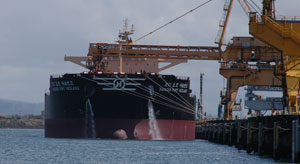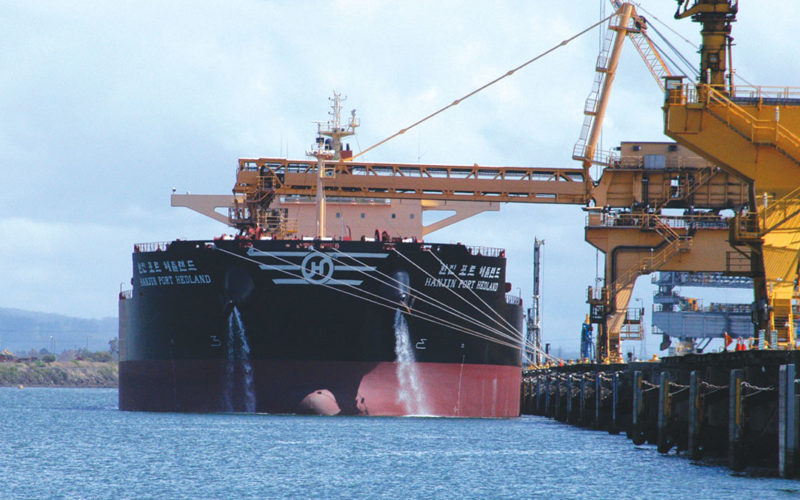
Managing ballast water is an indispensable part of maritime operations. How that water is treated before it is discharged will grow in importance as new international rules come into effect.
The Ballast Water Management Convention entered into force internationally in September 2017. As of July 2021, 86 countries have signed onto the agreement. Regulations in the United States enforced by the Coast Guard roughly parallel those international rules. California, meanwhile, has its own ballast water standards.
Tugboats and smaller vessels, as well as cruise ships, tankers, and bulk cargo carriers, regularly take on and pump out significant quantities of water. That water can contain non-native plant and animal species and pollutants. Reducing or minimizing the spread of these materials is a primary goal of the regulations.
More than 60 ballast water management systems (BWMS) have received basic or type approval by the IMO, and the U.S. Coast Guard has authorized more than 40 systems. Compliance is monitored in the U.S. during port state control inspections, or through the certificate of inspection protocols for U.S. ships.
According to Coast Guardspokesperson LTJG Sondra-Kay Kneen, the examination begins with a check of the ship’s documents, including the Ballast Water Management Plan, National Ballast Information Clearinghouse Report, and ship’s ballast water recordkeeping. “If there is a ballast water treatment system onboard, inspectors will check to ensure it is functioning and that the crew knows how to maintain and use it per the manufacturer’s specifications,” she says.
Kneen says the Coast Guard continues to see a trend toward greater compliance with the ballast water management regulations contained in 33 Code of Federal Regulations Part 151.
That trend toward improved compliance has driven investments in more sophisticated (and expensive) ballast treatment systems. De Nora, based in Milan, Italy, is one of many firms making these systems. The company recently acquired the UV Technologies Division from Calgon Carbon Corp., which includes the products, brands, and assets of the ultraviolet ballast water management system company Hyde Marine.
The company says the merger creates one of the largest ballast treatment manufacturers in the world, with a portfolio that includes the De Nora Balpure electrolytic disinfection system and the Hyde Marine ultra-violet Hyde Guardian system.
With the deadline for ships to install a BWMS approaching, temporary bottlenecks are occurring across the industry – alongside a boom in demand, notes Matt Granitto, global marine director at De Nora. He says this has created “a new dynamic.”
Erma First, founded in 2009 and headquartered in Greece, has been selling its electro-chlorination systems for larger vessels and is now expanding its portfolio to provide a wider range of products. In May, it acquired German water treatment company RWO GmbH and recently added what it calls “the world’s smallest ballast water treatment system” to its product line through its acquisition of oneTANK LLC.
In a press statement, Erma First Managing Director Konstantinos Stampedakis said, “This is a game-changing ballast water treatment technology … to win the battle against invasive marine species … ballast water from internationally trading smaller vessels also needs treating in a way which is practical and economically viable.”
OneTANK had been a subsidiary of Seattle-based naval architecture and marine engineering firm Glosten, which developed a compact, innovative, and low-cost system that was compliant with U.S. and international requirements. Built originally on a patented mixing technology developed by the U.S. Geological Survey, the system can be installed in larger vessels’ aftpeak tanks. Its compact dimensions also make it potentially useful for workboats, tugboats, semi-submersibles, and fishing vessels, according to the company.
OneTANK says the technology has been adopted on Overseas Shipholding Group’s tanker fleet and on the dredger MV Charlock in the Netherlands.
OneTANK Managing Director Kevin Reynolds explains that the system treats ballast water within the vessel’s ballast tank and has no filters, ultraviolet lamps or electrolytic chlorine generators. Its footprint is only about two feet by two feet, making it half the size of its nearest competitor.
For smaller vessels, Reynolds notes that its 110-volt, AC requirements are easy to work with and its power consumption is like that of a home appliance.
Many vessel owners have now operated a ballast water management system at sea for the first time and have discovered the issues that poor quality or unreliable systems cause in real life, says Matt Granitto, global marine director at De Nora.
As a result, “shipowners and operators have placed more emphasis on ensuring that a BWMS is reliable, easy to operate, and will treat water to the required standard while onboard a vessel,” he says. At the same time, he suggests installers and yards are prioritizing suppliers who are able to leverage global, agile supply chains and have a manufacturing footprint capable of meeting demand.
But there is another challenge ahead, according to Steve Candito, CEO of Ecochlor, a ballast water treatment maker based in North Haven, Conn.
That challenge is for operators subject to IMO rules. The IMO rules for biological efficacy commissioning tests are scheduled for mandatory implementation in less than a year, by June 2022. “With everything that a shipowner needs to accomplish in preparation for the BWMS installation, the logistics and planning for the commissioning test occurs at a stage where it is often overlooked with consequences that could be quite costly,” he says.
Candito offers four suggestions for making IMO commissioning successful — advice that could also help with other ballast treatment compliance verification.
First, he recommends getting the applicable test requirements in hand, for example from a given flag state.
Second, he recommends dedicating time to plan, schedule, and conduct the tests. “Owners should aim to complete BWMS installation before the final phase of the shipyard period so that the commissioning tests can be conducted with sufficient time prior to the vessel’s scheduled departure from the shipyard,” says Candito.
Third, ballast tanks should be cleaned prior to the ballast treatment installation. According to Candito, a number of manufacturers have been reporting that contamination coming from ballast tanks that have not been cleaned at BWMS installation and which therefore contain significant levels of untreated silts and sediments has led to high failure rates during testing.
The fourth and last recommendation from Candito is, when possible, to have the manufacturer attend the testing and potentially help address any issues that arise.
Reynolds agrees commissioning these systems requires attention and specific skills. “Most installs are done in shipyard,” he says, “and many organizations are now struggling to meet the schedule, especially smaller companies that didn’t have a plan.” •

